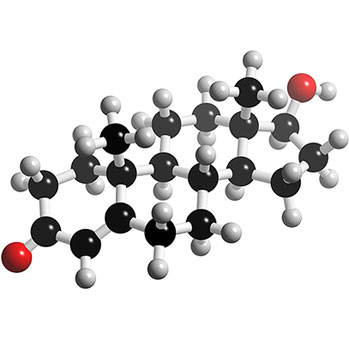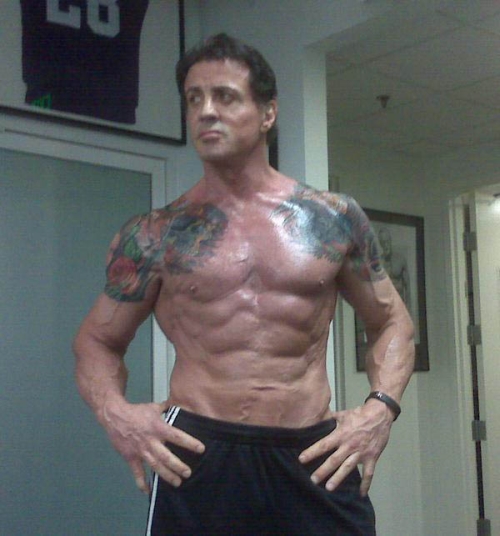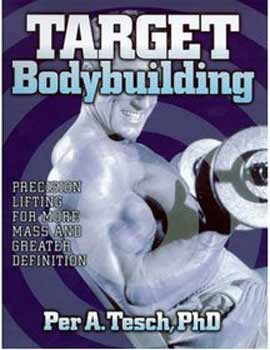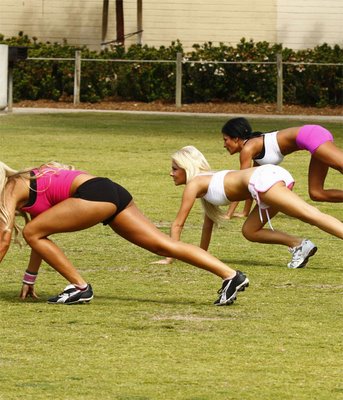Archive for the ‘BodyBuilding’ Category
Anabolic Stacks
Anabolic stacks are a natural but not always healthy alternative to anabolic steroid use when one is considering anabolic solutions. A natural anabolic stack will be less potent than anabolic steroids in all circumstances but is much safer and cheaper.
Lets face it its better to use a legal anabolic if you can – right ?
You often hear lots of stuff about anabolic steroids, but do you exactly know what anabolic steroids are. I feel most of you people still need to have complete knowledge on anabolic steroids VS pro anabolic stacks.
Anabolic steroids, also known as anabolic-androgenic steroids or AAS, are the steroid hormones related to the hormone testosterone, which is key player in the growth of cells, tissues, muscles, bones, and genitals.

Actually, anabolic steroids are the synthetic derivatives of the naturally occurring male anabolic hormone testosterone, the principal male sex hormone. The anabolic steroid testosterone is primarily secreted in the testes of males, and the ovaries of females, although small amounts are secreted by the adrenal glands. It plays key roles in health and well-being in both males and females. It is responsible for libido, energy, immune function, and protection against osteoporosis. On average, an adult human male body produces about eight to ten times more testosterone than an adult female body. Testosterone is also found in numerous animals.
Etymologically, the words anabolic and androgenic have come from the Greek – the word ‘anabolic’ meaning “to build up”, and the word ‘androgenic’ meaning “andros” i.e. “man” + “genein” i.e. “masculinizing”. Thus, anabolic steroids have many androgenic and anabolic properties.
First discovered in the early 1930s, anabolic steroids have been since used for a number of medical purposes, such as to push up bone growth, muscle growth, appetite, protein synthesis, and puberty. These drugs are often used to treat several chronic wasting diseases, such as AIDS and cancer. They are also beneficial in curing a number of disorders and conditions associated with low level of testosterone in body.
However, over use or excessive use of anabolic steroids has a number of side effects, such as giddiness, early hair loss, mood swings (anger, depression and aggression), delusion, feelings of fear and suspicion, sleeping problems, vomiting and nausea, trembling, joints pain, yellow fever, high blood pressure, problems in urinary system, heart problems, stroke, liver damage, etc.
Anabolic steroids work imitating the properties of naturally occurring hormones in your body. Your muscle tissue is peppered with receptor sites specific to growth. The correct hormonal ‘key’ can only access these sites or ‘locks’. As their chemical composition is so similar to the hormone testosterone, anabolic steroids can activate these receptor sites. Once the receptor sites have been stimulated, a domino effect of metabolic reactions take place as the body is instructed by the drug to increase muscle tissue production.
While the beneficial affects of anabolic steroids seem to be out weighed by the disadvantages it is a good idea to consider using an anabolic stack that is drug free.
Two such stacks are the HGH and Testosterone natural anabolic stacks available for free download from my site.
In these two free guides the natural anabolic stacks are discussed and the pro anabolic ingredients are listed so you can make your own legal anabolic alternative to anabolic steroids.
http://www.freefitnessguru.com/Downloads/HGH_Stack.pdf
http://www.freefitnessguru.com/Downloads/Testosterone_Stack_Report.pdf
BodyBuilding Jargon
Hey I could compile a list 100x this long but I found this on another site & thought it may be useful for newbies.
# Bitch Tits:
A condition in which femaile like breast development occurs in a bodybuilder, also called Gynecomastia.
# Bulking Up:
Gaining bodyweight by adding both fat & muscle, a once common practice no longer in vogue among knowledgeable bodybuilders.
# Burn:
The burning sensation in a muscle that comes from the lactic acid and pH buildup resulting from exercising the muscle to failure.
# Cap:
The deltoid muscle of the shoulder, which can be divided into front, middle and rear heads for training.
# Cheat Reps:
When muscle fatigue begins to set in or the weight is too heavy, some athletes employ body English or ‘improper’ form to make the lift, using surrounding muscle groups or even momentum to assist in the movement.
# Close Sport:
Standing by, alert and ready to assist promptly if called upon by someone performing an exercise.
# Circuit Training:
A workout technique in which the individual goes from one exercise to another. one set per movement per round, with minimal rest, thus gaining some aerobic benefit at the expense of maximal strength gains.
# Cramping:
Exercising a muscle using shortened movements that causes a muscle to cramp, contracting painfully perhaps to the point of temporary fatigue to achieve a greater pump.
# Cutting Up:
Stripping the body of excess bodyfat while retaining maximum muscularity. Also can be called Ripped, Shredded, Sliced, etc.
# Cycle:
A length of time set aside for specific types of training, whether for bulking up, getting stronger, getting leaner, etc. Combining individual training cycles is sometimes referred to as periodization.
# Cycle (of steroids):
Another meaning is taking one or more specialized supplements (or steroids) for a specific period of time, as taking creatine for two months, then stopping for a month.
# Definition:
Extremely low bodyfat coupled with superior muscle separation and vascularity; the physical manifestation of ‘dialing it in’. Adjectives that are used to describe this desired state include ripped, shredded, sliced, cut, striated.
# Dialing It In:
The process of training and dieting to get shredded for a contest. Adjectives include on time, on the money, peaking.
# DPP:
Short for Discipline, persistence and patience.
# Flat:
Describes muscles that have lost their fullness, commonly caused by overtraining, undertraining or a lack of nutrients and water.
# Flush:
To increase the blood supply to a muscle, thereby bringing in more nutrients.
# Forced Reps:
Additional repetitions of an exercise performed with the help of a partner when you’re unable to do anymore reps on your own.

# Freak:
Anyone with inhuman size or unproportional muscles. The person that makes you stare.
# Free Hand Movement:
Any exercise that can be performed without exercise equipment, using only your bodyweight, such as a push-up or squat without weight.
# Full:
The appearance of muscle pressing against skin. The best competitive bodybuilders manage to look simultaneous full and shredded.
# Glutes:
A shortend version of gluteas maximus, the largest of the muscles forming each of the human buttocks.
# Guns:
Another word for Biceps, alone for with triceps. Other slang words include Pipes, Pythons…
# Hardbody:
Women who are so toned, so good looking, with excellent physique. Top of the line fitness competitors.
# H.I.T.:
High Intensity Training. A method that states it is not about doing ‘more’ or ‘less’ exercise but rather an appropriate amount on exercise to stimulate optimum muscle growth.
# Intensity:
It can mean that the pace you keep while you train is higher than normal, as in moving quickly and taking a shorter rest between sets. It also can mean that the weight you use during those sessions is relatively heavy for you. It can also mean that the workload within a given time period, combined with the weight and pace is increased.
# Isolation:
A technique that focuses work on an individual muscle without secondary or assisting muscle groups being involved, which provides maximal muscle shape. A good example is the seated dumbbell concentration curl.
# Juice:
Meaning anabolic steroids. Other slang words for steroids include gear, sauce, roids…
# Lats:
A term which is abbreviated jargon for the latissimus dorsi. This Latin term translates roughly into ‘lateral muscles of the back’. When viewed from the rear, and relaxed, the lats form large. inverted cones.
# Lean Body Mass:
Fat Free body tissue, comprising mostly muscle. Lean mass is the primary determinant of the body’s basal metabolism (calories you burn at rest). In healthy men, bodyfat (bodyweight minus lean body mass) ranges from 8-12%; in women, 18-22%.
# Mass:
Size – lots of it. If you train hard and eat right, you can add muscle. A growing bodybuilder’s favorite word!
# Muscle Confusion:
A technique to counteract the cessation of growth that occurs when muscles adapt to the training demands placed upon them. To keep the body growing and getting stronger, a bodybuilder needs to vary his/her sets, reps, rest, weight used and exercise angles during each workout.
# Negatives:
The act of lowering a weight againt gravity, speicifcally, resisting gravity by lowering the weight slowly and under control.
# One Rep Max (1RM):
Your absolute strength in a given movement. Powerlifting competitions are a test of 1RM strength. For many bodybuilders, especially beginners, 1RM training is harmful because of the higher risk of injury. A weight that you can just complete in 10 reps is a good approximation for most people of 75% of their 1RM.
# Peak:
As a bodybuilder prepares for a contest, he/she cuts bodyfat to an unusually low level to bring out maximum muscularity that can be maintained for only a short time, usually only a few days.
# Plates:
The weights that you put on an Olympic dumbell, specifically a 45 pound weight. Smaller weights are called quarters (25 pounds), dimes (10 pounds), and nickels (5 pounds).
# Periodization:
Also called Cycle Training, a predetermined approach to strength and muscle building in which bodybuilders train light for several weels, then heavier, and then really heavy, and the process is cycled. Helps avoid injury and burnout.
# Progressive Overload:
Gradually adding more resistance during strength training exercises as your stregth increase.
# Pump:
The look and feeling a bodybuilder experiences when his/her muscles engorge with blood as the result of intense exercise.
# Pyramiding:
The act of increasing your poundage while decreasing your reps on successive sets.
# Ripped:
A condition of extremely low bodyfat with superior muscle separation and vascularity. Variations include sliced, cut, and cross-straited.
# Rep:
Moving a weight through a range of motion and then back again one time, short for repetition.
# Set:
A unit of exercise measurement consisting of a movement that is repeated a desired number of time.
# Shredded:
To get ripped, to have extremely low bodyfat with superior muscle separation. Also, sliced, cut, and cross-straited.
# Site Injections:
A terms involving injecting steroids right into a specific muscle groups, to help them bring up lagging bodyparts.
# Six Pack:
A ab muscles so well developed that you can see the separate muscle under the skin where your stomach is. Other words include washboard.
# Skull Crusher:
The lying french press, in which you lower a barbell from full etension above your head down to your forehead and then extend at the elbows to press it back up.
# Spot:
To ‘stand guard’ while someone performs a set with heavy weights. A ‘spotters’ main duty is to prevent unjury in case that someone cannot finish is reps.
# Stacking:
Usually mixing one or more supplements together.
# Unilateral Training:
It means working one side of the body at a time.
# V-Taper:
A person with big shoulders and a small waist.
# Vascular:
The visibility of veins on a bodybuilder as a result of exercise and low bodyfat (and perhaps higher blood volume).
Stallone in Top Shape at 62
Hey lets face it this dude is juiced on HGH and god knows what but he is in incredible shape.

Even if he is on the juice its still an inspiration – and a challenge.
Do More Work in each Workout
Today I am modifying my workouts with some advice from a couple of sources. I recently got hold of a book from human kinetics called target bodybuilding.
This book shows MRI scans of muscles immediately after certain exercises so you can see exactly what exercises stimulate what muscle groups. Some times the results are quite different from what you would expect.
For example to specialize on my upper arms I should do curls with an arm blaster, and weighted dips for triceps. Those two exercises hammer all of the upper arm muscles.

The other change I am making is to increase the work done per workout. Essentially this means using exercises that expend more energy to perform according to the laws of physics.
An example is doing squat instead of leg press, or deadlift instead of leg curl for hamstrings. Clean and jerk, bench press with free weights. Multi joint exercises with free weights that have a greater range of motion are recommended.
The result is a more intense workout that uses more energy. More info can be found in the “truth about abs” ebook advertised on this site. Basically the ebook recommends high intensity training rather than cardio and shaping style workouts.
Why do some weight train for life & others give up ?

Currently I have been weight lifting and keeping fit for 25 years. I have never, ever used steroids and gave up alcohol and smoking 25 years ago.
When I made the commitment to lift weights it was a permanent one.
The gym became my place of hope and solace. My health and fitness keep me happy and positive when everything else can be going wrong sometimes. If you are well – thats what matters.
So why do most people who undertake fitness give up after 6 months ?
Why do millions of people who know how much better fitness makes their lives still just give up ?
I cant say why straight out of my head – I don’t know.
Is it because they are dumb, lazy, disorganized ? Well not keeping in shape is all of those things but of course plenty of clever & hard working people die an early death because they are not in shape.
The answer must be psychological in nature, it must be related to motivation. We are talking a lifetime commitment here – a major life change.
I believe the answer is the in initial psychological imprint this change has upon your mind. For me the change to a healthy lifestyle and body building was phenomenal.
I was a skinny picked on drug addict and street kid. I weighed like 6 stone and was a dope smoker and drunkard truant. I was a very bad kid, the guys I hung out with were 10 yrs older than me. We are talking a convicted rapist, drug dealers, violent people.
The terrible thing is I became as bad as them myself. I was nearly murdered as a kid and my family busted up so I really didn’t have any role models that made me feel safe or welcome except for a bunch of small town thugs.
Those were tough times – at 6 stone I was nearly at deaths door.
Body building turned it around for me. Just like if a person saved your life you would owe them right.
Well body building saved my life. I doubled my weight, kicked the drugs & booze and lost the bad company.
I studied psychology and motivation and went back to school (from which I had been expelled for drugs). So after that there was no turning back.
I think that the reason some people train for life and others do not is quite simple. Those that never give up have a genuine appreciation for the benefits of fitness and the seriousness of those benefits.
Those that give up do so out of ignorance.
Google Distance Calculator for running
Man I just discovered something that kind of sucks.
Check out this site : http://www.daftlogic.com/projects-google-maps-distance-calculator.htm
Its very cool and I have been using it to plan my runs. Basically I dont want you to make the mistake I made.
Heres the track I have been running:

As you can see the distance is 2.4 kms or 1.5 miles. So I thought I was doing great on my times on this track – OH OH – not true.
By chance I turned on satellite view :

This gives me a much clearer image showing the tree lines and the actual track I run – as you can see its considerably different (shorter) than what I thought I was running.
An honest mistake that unfortunately means my run times are total shit – 11.30 for a 2.4 km run.
This is after I have blown my ass and told everybody how fast I was running the 1.5 mile.
Heres my real track again:

I’m not pissed that I made this mistake – such is life.
A Fitness Myth Exposed – Running ?
I never used to be a big runner – still am not. I know its great for losing fat and developing cardio, but its bad for your knee’s and hips.
Anyway some years back I was in the army reserve my time on 1.5 miles was around 10:30 or 11 minutes – which isn’t fantastic.
In the years since I have done some running but more long slow distance of several kilometers. I have however done much time on the rowing machine – 3 or 4 times per week for many years.
So my cardio has been good as a consequence of this. Now I have decided to take a crack at the army again and and have taken up the training to pass their running test. I first tried the test and failed miserably at 12:47.
After weeks and months of fin swimming, running etc I now have the time down to around 9 minutes and expect to soon have it below that.
But you know what – stick me on the rowing machine and I have not improved at all.
So whats going on ? Has the improvement in running time corresponded with improved VO2 max and cardiac output or is it just a result of better leg endurance.
Well I can tell you that after some of my training sessions in the evening when resting my pulse rate has been remarkably lower that it was formerly so that is clear evidence of improved cardiovascular output.
But most of my cardio training still is not running – its fin swimming.
I just do the runs to test myself – Its the fin swimming that is doing the bulk of the conditioning.
Fin swimming is great because it taxes and conditions the lower legs, thighs, hamstrings and is great for heart and lungs. Plus its zero impact.
Male BodyBuilders – Get Your Blood IRON Checked !!!
Doctors can be so frustrating for us athletes. I’m still waiting to get my blood taken to correct my high Ferritin. Hopefully it will be sorted in a few days.
Anyway 1 in 15 sedentary, normal adults has high ferritin. High ferritin over time leads to cancer, stroke, heart disease etc.
One teaspoon of iron powder will kill any human adult – Iron is that toxic even though its an essential mineral and common in everyday life. Its actually also a deadly poison. Most lethal poisonings in young children are the result of iron ingestion.
With our high calorie diets and high protein – hence meat diets, bodybuilders are at a greater risk of acumulating too much iron.
Your actual iron count may be normal, what you need to check is the ferritin which indicates iron stores. Iron can also indicate inflamation and my stupid GP has wasted months of my time trying to pin my high ferritin to inflamation – for which there is no indication.
So now I am trying to get the blood donation doctor here to approve me.
Once thats taken care of I will simply donate blood regularly – this way I don’t need to change my bodybuilding diet.
1.5 mile run in 9 minutes
Yippee I just did a 9 minute run with little difficulty after a 3 week layoff from running because of a hemorrhoid.
I think swimming with fins kept building my fitness and also my calf indurance. I will aim for 9 minutes on my next 3 tests then start aiming for 8:30. I will hit the wall somewhere after that.
I flunked the advanced math test for army systems engineer, so I changed my application to officer corp. Its good motivation.


